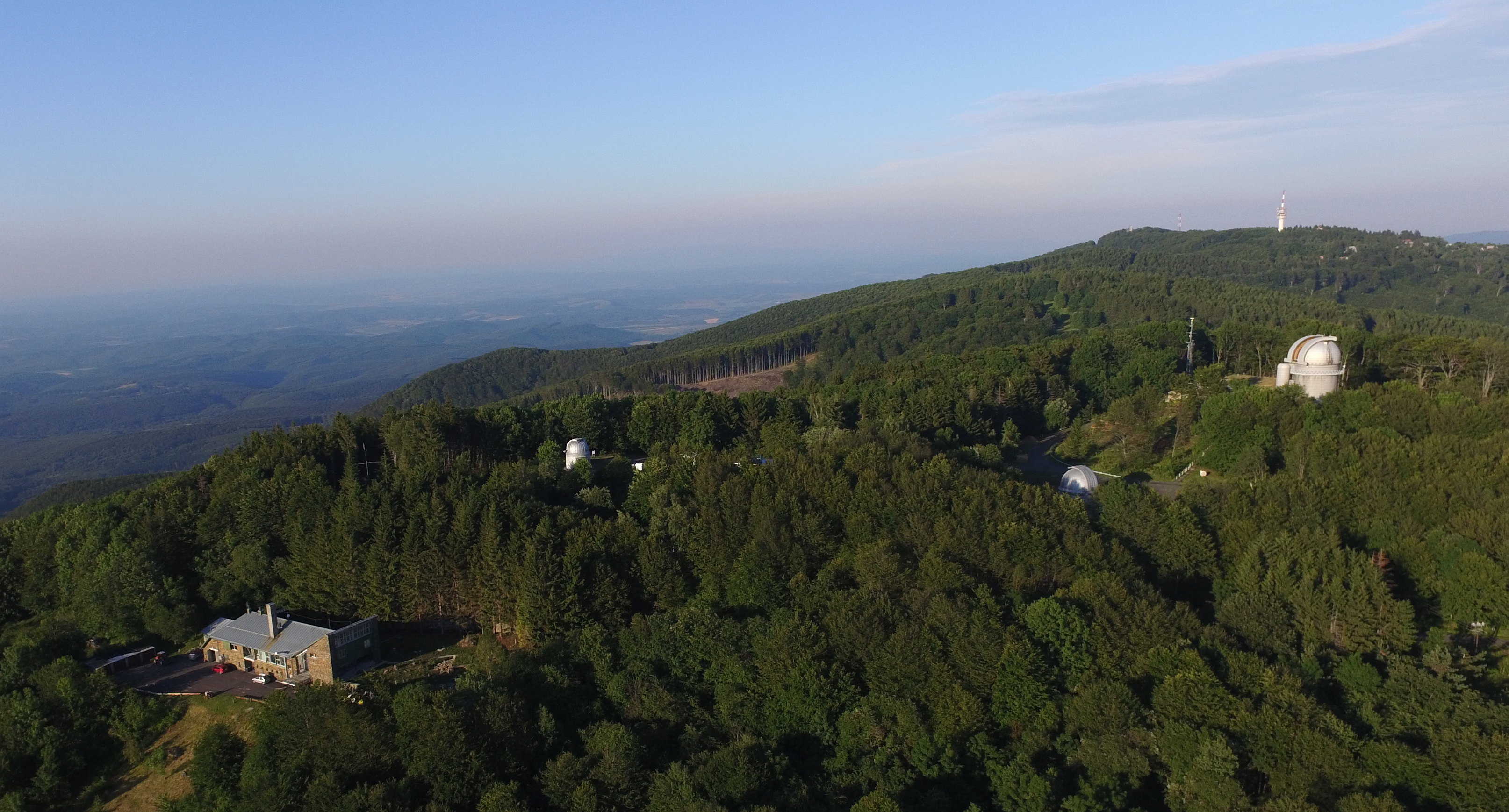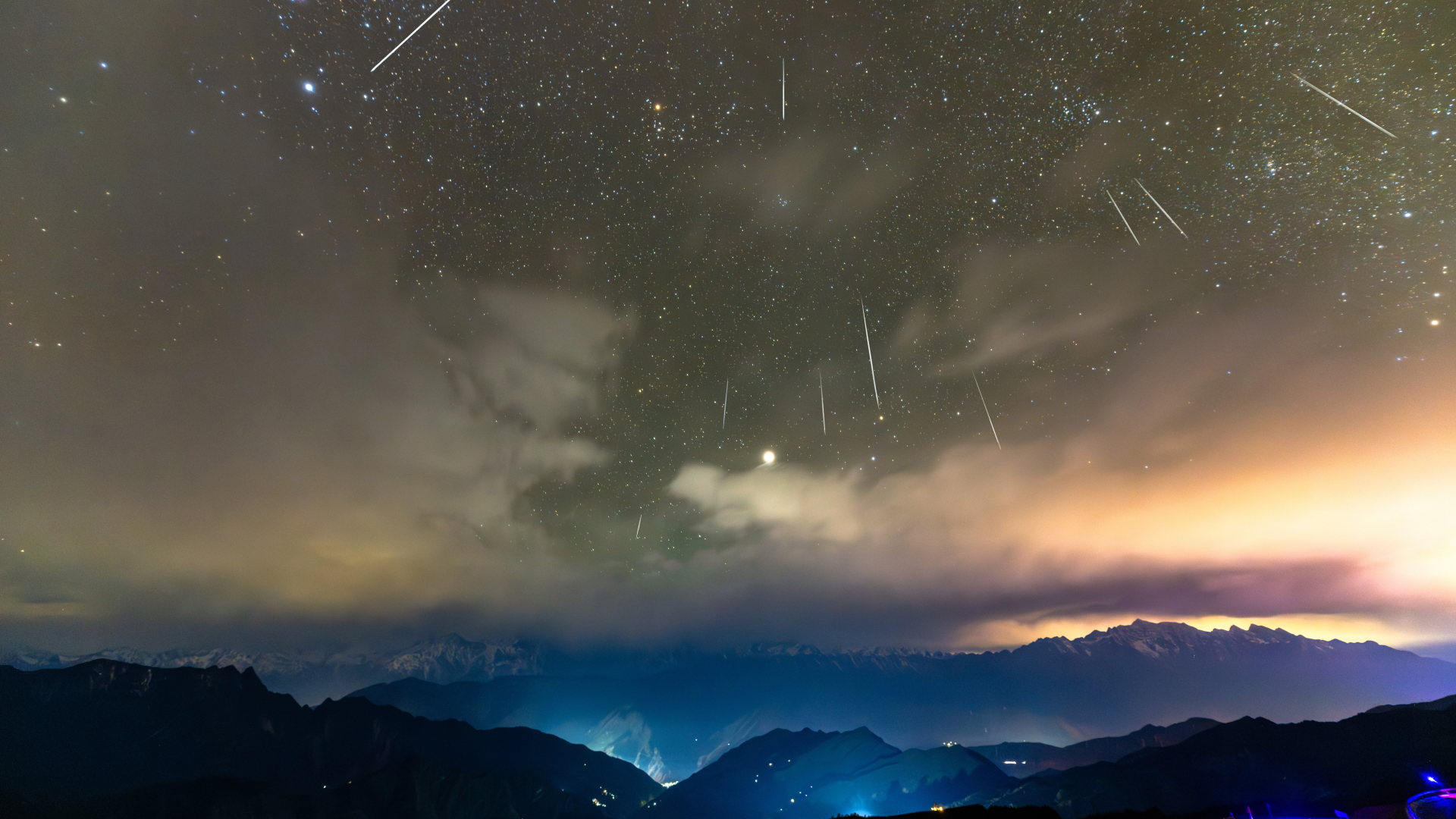This astronomer turns small Eastern European country into an asteroid-spotting powerhouse

The vast majority of asteroids potentially threatening our planet are discovered by NASA-funded telescopes. The second spot currently belongs to Hungary, a tiny Eastern European country with less than 10 million inhabitants.
This unexpected prominence is mostly down to one man — Krisztián Sárneczky — an astronomer who made headlines last month by discovering a small space rock that was just about to hit Earth. Sárneczky's success, however, has been achieved against many odds. For one, the sky over Hungary can be overcast for up to 190 days in a year, according to Weather Atlas. That leaves only about half a year for observations.
Sárneczky, who's been a professional asteroid hunter since 2010, makes the most of that time, however. Since August 2020, when his asteroid searching project got full-time control of a 1960s 60-cm telescope at Hungary's Piszkéstető Observatory, his life has been run by the weather forecast.
"I have been searching for near-Earth asteroids every clear night since August 2020 except for four to five nights around the full moon and a few short summer nights when I was on vacation," he told Space.com in an email. "Around sunset, I turn on the telescope and wait with the open dome slit for it to get dark enough. When the weather is right, I take pictures and immediately process them. If the weather is cloudy, I wait to see if it gets better."
Photos: Asteroids in deep space
From dusk to dawn
Night after night, from dusk to dawn, Sárneczky sits at his telescope, some 60 miles (100 kilometers) away from the capital Budapest, scanning the sky slice by slice for fast-moving objects. When he spots a movement that doesn't match coordinates of any known space rock, he logs its position and brightness and sends the data to the Minor Planet Center, the NASA-funded hub responsible for keeping track of asteroids and comets in the solar system.
"If that happens, I have to stop the regular search program and begin the follow-up observations of the new object," Sárneczky said. "Later I continue searching, but keep returning to the new object."
Breaking space news, the latest updates on rocket launches, skywatching events and more!
Sárneczky diligence is paying off. He discovered what was only the fifth space rock identified before hitting Earth, the now famous asteroid 2022 EB5, which exploded above the Northern Atlantic in early March only two hours after Sárneczky had found it. He also discovered 2022 FD1 only a few days later. This asteroid, about 6.5 to 10 feet wide (2 to 3 meters), too, appeared to be on a collision course with Earth, but missed the planet by a few thousand miles. And he has already spotted other space rocks since then.
"Now I have got 70 designated near-Earth asteroids, 661 numbered and [around] one thousand designated, but unnumbered main-belt and Jupiter Trojan asteroids," he said. "The size gets bigger the farther away from Earth they are, but at about the distance of the moon, I think I could find rocks that are 1 to 2 meters [3.2 to 6.5 feet] wide."

Small but indispensable
Since the 2000s, at the behest of Congress, NASA has stepped up investment into asteroid monitoring, funding new dedicated telescopes in the world's best locations and expanding existing ones. These powerful observatories include the Panoramic Survey Telescope and Rapid Response System (Pan-STARRS) in Hawaii, which is equipped with a 1.4 billion pixel camera, the largest in the world, and the Catalina Sky Survey in Arizona. The goal of these telescopes is to find 90% of all near-Earth asteroids larger than 460 feet (140 m).
However, in spite of the power of these facilities, smaller observatories, such as Sárneczky's Piszkéstető, or even amateur skywatchers with telescopes in their backyards, often play an important role in the discovery process, Peter Vereš, an astronomer at the Minor Planet Center told Space.com.
"The discovery telescopes only report the first position of an unknown object and often don't have either time or their own follow-up telescope to confirm it," Vereš said. "There is no discovery without a follow-up. All newly seen objects wait for the confirmation observations from telescopes around the world, which sometimes takes days."
Teamwork
Sárneczky's 2022 EB5 was only confirmed thanks to a quick response of an amateur observer in neighboring Slovakia, Vereš said. If that amateur had not been staring at the Near-Earth Object Confirmation Page (NEOCP), where MPC publishes all reported discoveries, just as Sárneczky's observations popped up, and if they hadn't taken immediate action, the sensational catch may never have happened. In just two hours, the space rock would have hit Earth's atmosphere above the empty ocean and disintegrated, its whereabouts remaining forever a mystery. The factor of chance is why astronomers have discovered only five asteroids just before they hit the planet (the previous four arrived between 2008 and 2019), Vereš said.
"In the case of the small Earth impactor 2022 EB5, the turnaround of follow-up observations was quick," Vereš said. "That was really important because we only had two hours between the discovery and the impact. The discoverer fortunately kept tracking the object with his telescope and continued submitting the positions. Other observers quickly realized the object was interesting and observed it too."
The Minor Planet Center, he added, continuously strives to make it easier for the small professional teams and amateurs all over the world to swiftly see observations of others, but also to enter their own data.
"Amateur observers [and professionals at small regional observatories such as Sárneczky] are motivated," Vereš said, particularly by the opportunity to appear in the center's bulletin.
Those that escape
Still, not all Earth-bound rocks get discovered, and even some much bigger than Sárneczky's 2022 EB5 can make it to Earth undetected. In February 2013, a 66-foot-wide (20 m) asteroid exploded near the city of Chelyabinsk in Russia. The blast, reportedly 30 to 40 times stronger than that of the atomic bomb the United States dropped on Hiroshima, Japan, during World War II, injured 1,200 people and damaged 7,200 buildings in the area.
Vereš admits that despite new investments since 2013, a rock like this, or perhaps one even bigger, could still strike out of the blue.
"The Chelyabinsk meteoroid arrived from the daytime side, thus ground-based observatories couldn't observe it," he said. "For that, we will need a space telescope that could look closer to the sun, such as the NEO Surveyor (NEOSM) that is scheduled to be launched in 2026."
(That mission would be delayed two years by the priorities outlined in the budget presented by President Joe Biden last month; that said, Congress must make the final decisions about what is funded.)
Small observatories, big aspirations
With NEO Surveyor and other large-scale NASA-funded asteroid-hunting projects that are currently in the works, the risk of unsuspected strikes the likes of Chelyabinsk will shrink. On the other hand, the catalog of rocks spotted just before they arrive is likely to grow.
For Sárneczky, it makes no difference. There's no chance of beating NASA in asteroid discoveries anyway, so he would be content to make Hungary the second best.
"I would be happy if Hungary would be the second most successful country after the U.S. in discovering near-Earth asteroids," the astronomer said.
Only two non-NASA funded observatories are currently in the top ten of the world's most prolific asteroid spotters: Hungary's Piszkéstető Observatory and a team of amateurs from the much sunnier Chile.
Last year, the Chilean team ranked eighth while Piszkéstető was in tenth place. This year, thanks to Sárneczky's lucky streak in March, Hungary is number seven, behind only NASA-funded telescopes.
"Weather was better in March so I was able to observe the sky more," Sárneczky said about his recent success. "So I had more chances to make interesting discoveries. And, of course, I was lucky that my telescope turned in the right direction at the right time."
Follow Tereza Pultarova on Twitter @TerezaPultarova. Follow us on Twitter @Spacedotcom and on Facebook.

Tereza is a London-based science and technology journalist, aspiring fiction writer and amateur gymnast. Originally from Prague, the Czech Republic, she spent the first seven years of her career working as a reporter, script-writer and presenter for various TV programmes of the Czech Public Service Television. She later took a career break to pursue further education and added a Master's in Science from the International Space University, France, to her Bachelor's in Journalism and Master's in Cultural Anthropology from Prague's Charles University. She worked as a reporter at the Engineering and Technology magazine, freelanced for a range of publications including Live Science, Space.com, Professional Engineering, Via Satellite and Space News and served as a maternity cover science editor at the European Space Agency.
